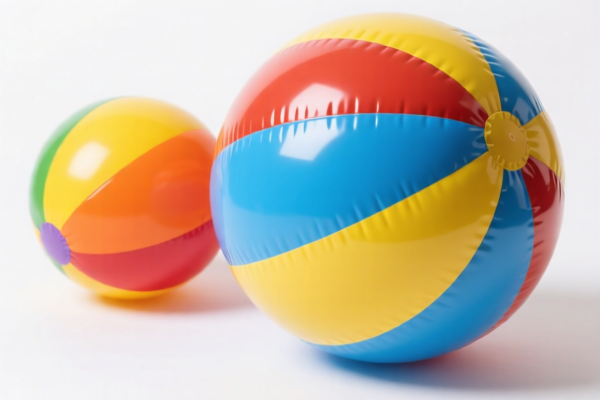| HS Code | Official Doc | Tariff Rate | Origin | Destination | Effective Date |
|---|---|---|---|---|---|
| 8208406000 | Doc | 55.0% | CN | US | 2025-05-12 |
| 8411214000 | Doc | 55.0% | CN | US | 2025-05-12 |
| 8411218000 | Doc | 55.0% | CN | US | 2025-05-12 |
| 8479899560 | Doc | 32.5% | CN | US | 2025-05-12 |
| 7326908688 | Doc | 82.9% | CN | US | 2025-05-12 |
| 7326908688 | Doc | 82.9% | CN | US | 2025-05-12 |




Propeller Blade
A propeller blade is a rotating airfoil that transforms rotational motion into thrust. It is a critical component of propulsion systems used in various applications, most notably in aircraft, marine vessels, and wind turbines.
Material
Propeller blades are constructed from materials chosen for high strength-to-weight ratio, resistance to fatigue, and ability to withstand aerodynamic forces. Common materials include:
- Aluminum Alloys: Historically common, offering good machinability and cost-effectiveness, particularly for smaller propellers.
- Wood: Used in early aircraft and still found in some specialized applications (e.g., aerobatic aircraft) due to its favorable strength-to-weight ratio and responsiveness. Typically laminated birch or spruce.
- Composite Materials: Increasingly prevalent, utilizing carbon fiber reinforced polymers (CFRP) or fiberglass for exceptional strength, stiffness, and reduced weight. Allow for complex aerodynamic shapes.
- Titanium Alloys: Used in high-performance applications demanding high strength and corrosion resistance, such as military aircraft and some marine propellers.
- Steel Alloys: Employed in larger marine propellers where durability and resistance to cavitation are paramount.
Purpose
The primary purpose of a propeller blade is to generate thrust. This is achieved by creating a pressure difference between the leading and trailing surfaces of the blade. The blade's shape, angle of attack, and rotational speed dictate the amount of thrust produced.
Function
Propeller blades function based on principles of aerodynamics, specifically Bernoulli's principle and Newton's Third Law of Motion.
- Bernoulli's Principle: The curved upper surface of the blade forces air to travel a longer distance than the air flowing under the flatter lower surface. This results in faster airflow above the blade, creating lower pressure. The pressure difference between the upper and lower surfaces generates lift – in the case of a propeller, this lift is oriented forward as thrust.
- Angle of Attack: The angle between the blade's chord line (an imaginary line from the leading to trailing edge) and the relative wind determines the amount of lift (thrust) generated.
- Pitch: The angle of the blade relative to the propeller hub. A higher pitch results in more forward movement for each revolution, but requires more torque.
- Rotation: The spinning motion of the propeller accelerates air rearward, creating thrust in the opposite direction (Newton’s Third Law).
Usage Scenarios
- Aircraft: Propellers are used in piston-engine aircraft, turboprops, and some experimental jet aircraft.
- Marine Vessels: Propellers are the primary means of propulsion for ships, boats, and submarines.
- Wind Turbines: Propeller-like blades (often called rotor blades) convert wind energy into rotational energy, which is then used to generate electricity.
- Drones/UAVs: Small propellers provide lift and propulsion for unmanned aerial vehicles.
- Fans/Blowers: Propeller principles are applied in axial fans for ventilation and cooling.
Common Types
- Fixed-Pitch Propellers: The blade angle is fixed, offering simplicity and lower cost. Efficient within a limited range of speeds.
- Constant-Speed Propellers: Automatically adjust blade pitch to maintain a constant engine RPM, providing optimal performance across varying flight conditions.
- Variable-Pitch Propellers (Controllable-Pitch Propellers): Allow the pilot to manually adjust blade pitch, providing flexibility for takeoff, climb, cruise, and descent.
- Reversible Propellers: Can change blade pitch to reverse thrust, used for braking and maneuvering marine vessels.
- Scimitar Propellers: Feature curved blade tips to reduce noise and improve efficiency.
- Counter-Rotating Propellers: Two propellers rotate in opposite directions to counteract torque and improve efficiency.
- Ducted Propellers (Fan Blades): Enclosed within a duct to improve thrust and reduce noise.
Propeller blades are cutting blades used in machines, specifically for agricultural, horticultural, or forestry machines. They are base metal parts of these machines.
The following HS codes are relevant:
-
8208406000: This code covers knives and cutting blades for machines or mechanical appliances, and base metal parts thereof, specifically for agricultural, horticultural or forestry machines, and parts thereof – other (including parts). A propeller blade could fall under "other parts" for these types of machines. The base tariff is 0.0%, with an additional tariff of 25.0% currently, increasing to 30.0% after April 2, 2025, resulting in a total tariff of 55.0%.
-
8411214000: This code covers turbojets, turbopropellers and other gas turbines, and parts thereof: Turbopropellers: Of a power not exceeding 1,100 kW: Aircraft turbines. If the propeller blade is part of a turbopropeller used in aircraft and has a power not exceeding 1,100 kW, this code may apply. The base tariff is 0.0%, with an additional tariff of 25.0% currently, increasing to 30.0% after April 2, 2025, resulting in a total tariff of 55.0%.
-
8411218000: This code covers turbojets, turbopropellers and other gas turbines, and parts thereof: Turbopropellers: Of a power not exceeding 1,100 kW: Other. If the propeller blade is part of a turbopropeller used in applications other than aircraft and has a power not exceeding 1,100 kW, this code may apply. The base tariff is 0.0%, with an additional tariff of 25.0% currently, increasing to 30.0% after April 2, 2025, resulting in a total tariff of 55.0%.
Customer Reviews
No reviews yet.